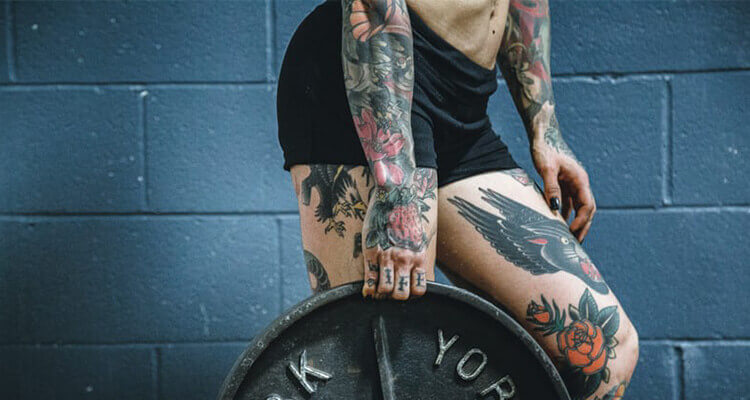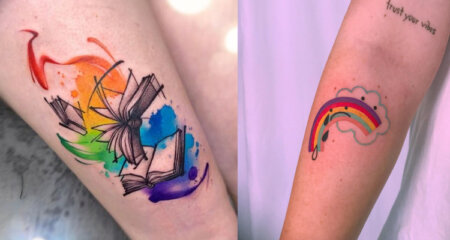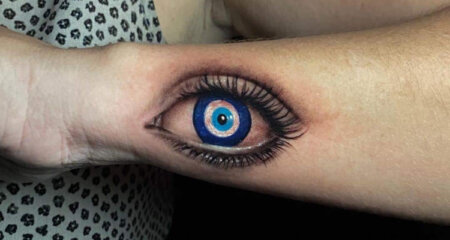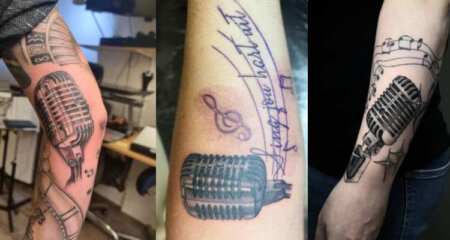
How Long Should Wait to Workout After Getting a Tattoo?
Posted on
It’s an exciting shift to get a new tattoo, and you want the ink to stay bright and the lines to stay clear. While you may feel fine after your tattoo, you should wait at least 48 hours before exercising. There’s nothing quite like excellent tattoos on toned muscles and healthy skin.
If you’re reading this, you probably believe the same thing, which is why you’re excited to go to the gym after getting a new tattoo to keep up with your routine. However, as with any physical exercise, you must take a step back to choose what is best for your body art investment.
Should you wait a week or two, or perhaps longer, to fully recover? Are there any other factors to consider or long-term implications? A new tattoo requires special attention to ensure that it heals properly, retains its vibrant colors, and does not become infected.
Your body art will be with you for the rest of your life, so make sure you know how to maintain it in good condition. However, tattoo aftercare isn’t limited to the store or the first few hours following the inking.
But just because you have an estimate of how long the healing process will take, which varies slightly for everyone and every tattoo, doesn’t mean you can stop doing what you’re doing until it’s finished, or that you can have a one-size-fits-all policy for keeping your tattoo clean. As your new body art heals, you’ll need to know how to safeguard it in every setting.
If you’re a physically active person, this is especially true when it comes to your fitness and training routine. The activities you’ll be doing, as well as the venues you’ll be doing them, may not be ideal for a healing tattoo; while there are plenty of people with tattoos in almost every fitness-focused space, the gym isn’t a welcoming environment for new ink.
How working out affects the skin?
To begin with, it is common knowledge that your skin extends throughout an exercise. This is common, especially if you’re trying to grow muscle and completing endurance or weightlifting training. When exercising involves lifting large weights for an extended period of time, the skin might become weaker and lead to the emergence of stretch marks.
Another essential thing to notice is the rise in skin temperature while exercising. Your body temperature and heart rate rise during the workout, resulting in a rise in body temperature.
As a result, you begin to sweat, causing a heat buildup on your skin. The increase in skin temperature helps to cool the body by assisting in the drainage of sweat from the skin.
When you get a new tattoo, it will be wrapped with foil and should be covered for the next 24 to 48 hours, depending on your tattooist’s advice. Your tattoo will behave like an open wound during that period. The tattoo will bleed, ooze, and expel any remaining plasma or ink. It’s an unpleasant and painful procedure.
When your tattoo has finished leaking, it will begin to dry, and you will need to concentrate on your aftercare routine. Consider going to the gym with an open and painful wound. Even if you don’t have any typical skin changes during an exercise, you’ll be quite uncomfortable and possibly in a lot of pain.
• Open wound
Hundreds of tiny puncture wounds are used to breach the skin during the tattooing procedure. It’s essentially an open wound. Germs can enter your body in a variety of ways, including through open skin. Harmful bacteria can be found on gym equipment.
• Stretching and sweating
Working exercise causes your muscles to stretch and your skin to sweat. Pulling the skin and sweating excessively in the tattooed area might sabotage the healing process.
• Friction
Rubbing clothing or equipment against a freshly tattooed region can irritate the skin, cause scabs to fall off, and impede complete healing.
Risk of Exercise:
Infection is one of the most serious concerns you face when working out after getting a tattoo. You should avoid touching the equipment at your local gym because it is likely to be contaminated with bacteria.
Stretching the skin and rubbing off scabs can disrupt the new ink that hasn’t fully set in your skin. Allow plenty of time for your body to recuperate before engaging in any vigorous activities.
Tattoo Placement:
Your training may be more difficult or easier depending on where your tattoo is located on your body. The higher the risk of obtaining a tattoo on your body, the less likely you are to be able to exercise correctly thereafter. That is the rule of thumb.
You should avoid working out if the tattoo is in a location where the skin stretches and sweats the most. Because these places stretch and sweat the most, the tattoo’s healing process may be hampered.
Also, because there are so many sports and physical activities, each of which affects different sections of the body, this portion might be difficult. To summarise, if the tattooed region is immediately affected by the workout, exercise, or sports activity.
The following factors will determine how long you should wait before exercising:
Tattoo Age
When compared to a tattoo that is a few days into the healing process, a brand-new tattoo is considerably more prone to injury. While some people exercise the day after getting a new tattoo, this is generally discouraged, and you should give your body at least a few days to recuperate.
Tattoo Placement
Tattoos that are situated out of the way during an exercise or workout are less likely to be harmed, but if your tattoo is in a spot that is relevant to what you are doing, there is a higher risk of an incident with your ink.
Also See: First Tattoo Placement Tips And Ideas
Workout/Exercise Type
Workouts, exercises, and gym routines all present unique obstacles to a fresh tattoo, depending on which body parts are involved and how likely a certain tattoo will be involved in the type of exercise you’re doing.
Workout Intensity
To begin with, the more intense your workout, the less attention you’ll pay to your tattoo. Second, excessive perspiration near a new tattoo might distort the ink that has yet to settle in place beneath the skin, potentially resulting in patchiness and fading.
Finally, the tattooing procedure is quite stressful on your body and results in a significant healing reaction. When you do vigorous exercise too soon after getting a tattoo and don’t give your body enough time to relax, you risk having a longer healing time.
Workout Clothing
When it comes to working out and exercising with a new tattoo, you must be extra cautious about what you wear. Clothing that is too tight can rub against the tattoo, causing irritation and possibly fading. Clothing that is excessively loose, on the other hand, can encourage dirt and bacteria beneath it, putting your tattoo in danger of infection.







